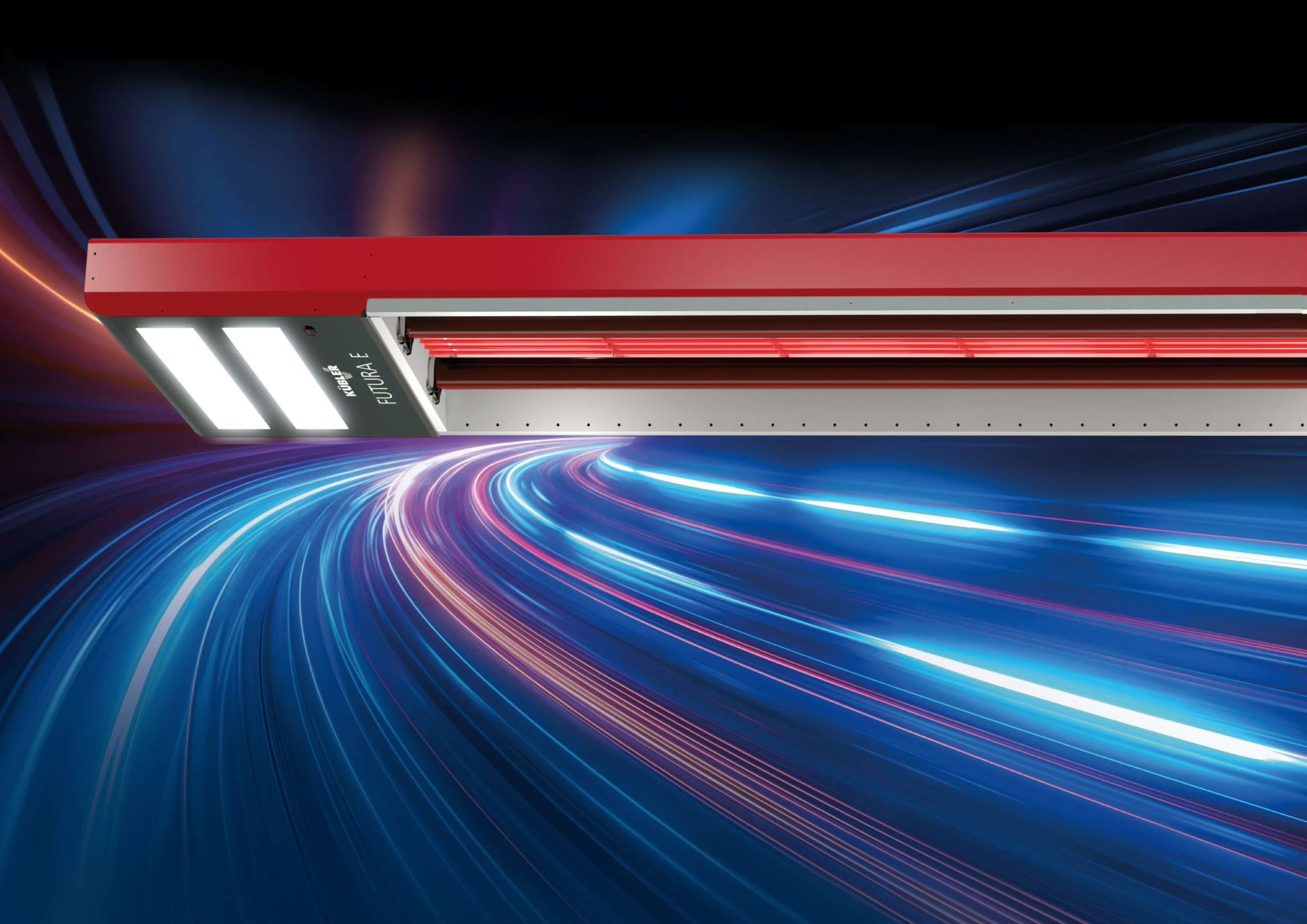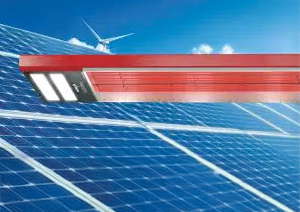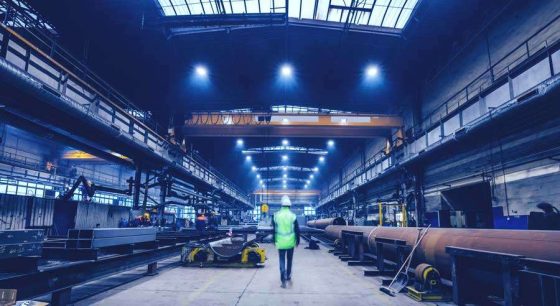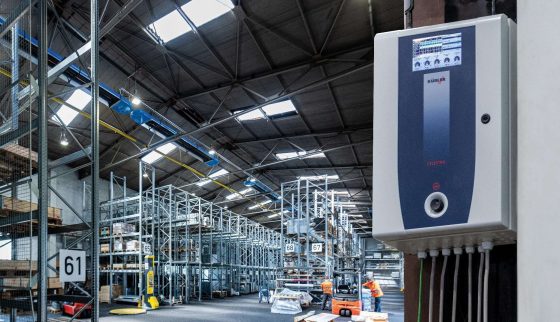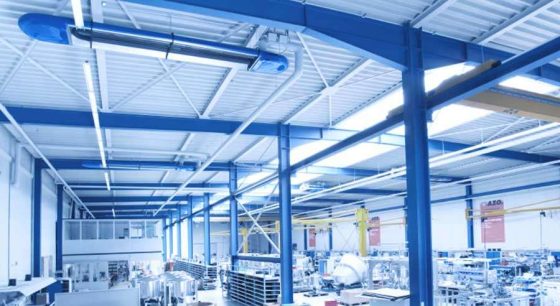Infrared hall heating in your production: How to create the right indoor climate for your production

Hall buildings are a world of their own. Particularly in winter, their high ceilings pose a real challenge for anyone who wants to ensure the most pleasant working environment possible in the workplace. But there are solutions - for example, infraredHall heating. But first you should ask yourself: What does a pleasant indoor climate actually mean? And which factors are decisive for this? There are various explanations that basically boil down to four different factors, which we will explain to you in this guide.
4 factors that influence a pleasant indoor climate at the workplace
Basically, when it comes to a pleasant indoor climate in the workplace, you should always pay attention to these four factors:
- Temperature
- Air humidity
- Air movement
- Air quality
While the temperature is highly dependent on the type of activity (18 °C is sufficient for physical work, at least 20 °C is required when sitting), there is a consensus on the factors of humidity, air movement and air quality. 40 - 60 % humidity, air movement of no more than 0.15 m/s (at 21 °C) and an oxygen content of 21 % are guideline values that most people find pleasant and therefore constitute the optimum indoor climate at the workplace.
The right indoor climate at the workplace influences the productivity of your employees
It has been proven that a poor indoor climate in the workplace has a negative impact on your employees' willingness and ability to perform. You will notice it at the latest when complaints are received or the sickness rate rises. The Federal Institute for Occupational Safety and Health (baua), among many other bodies, has looked into this and wrote about it in a report published in 2016 Report:
"Minor deviations from the "optimum climate" initially lead to discomfort, resulting in complaints about the climate (too hot, too cold, draughts). If these effects intensify and climate monotony or the inability to influence the climate yourself is added to this, this can lead to a high level of dissatisfaction, stress and psychological strain; motivation and satisfaction with one's own work decrease. Ultimately, the willingness to make an effort decreases, employees feel less productive and objectively measurable productivity losses and increased error rates can occur."
The problems you encounter when you want to create the optimum indoor climate in the workplace
Hall buildings are not easy to heat. Because the rooms are particularly large and high, it can also be particularly challenging to achieve the ideal indoor climate in the workplace. Find out below what problems arise when choosing a hall heating system.
Problem 1: The size of hall buildings as the biggest challenge for the indoor climate in the workplace
It is still relatively easy to positively influence the indoor climate in offices. However, if the workplace is a production hall, those responsible face completely different challenges. This is because the corporate goal of a "good working environment" faces headwinds from various directions:
- Large ceiling heights from 4 to 20 meters and more
- Long gate opening times
- Various work areas and hall zones
- Different building floor plans and layouts
- Dynamic temperature requirements
- Insufficient insulation, especially in old halls
- High pressure to reduce operating costs
Creating the optimum indoor climate in the workplace is therefore anything but easy in a production hall. Just keeping the temperature in such a building at a comfortable level is no trivial matter. Particularly because good and even heating is also important against the background of the Energy efficiency must be considered. Not to mention humidity, air movement and air quality.
Problem 2: Not every heating system contributes to a good indoor climate at the workplace
To the Hall heating a wide variety of technologies are used. Not always with the desired result in terms of functionality, heating comfort and economy. They differ according to the type of energy source (heating oil, gas, wood, electricity, solar) and the type of supply: centralized or decentralized. Decentralized heating systems are the technology of choice in many areas of application today. In particular, gas-powered infrared radiant heaters of the dark radiant type play a prominent role because they are specially designed for heating high rooms and offer important advantages there.
No hot air: Why infrared indoor heaters are so good for the indoor climate in the workplace
Infrared hall heaters are Radiant heaters. These heating systems transfer heat by emitting infrared radiation. As soon as the rays hit bodies or objects, they are converted into heat. The effect of infrared hall heaters is therefore similar to the heat principle of the sun, which does not heat the air but directly heats people, room frames, machines and other objects in the hall, resulting in a particularly pleasant indoor climate in the workplace.
Radiant heaters also have the decisive advantage in high rooms: where no air is heated, no warm air can rise high under the hall roof and form unused warm air cushions there - outside the working area. Infrared hall heaters are specially designed to bring heat evenly into the area of use. And nowhere else. Incidentally, this is also the key reason why these systems are so energy-saving and therefore so economical and environmentally friendly.
Infrared indoor heaters influence an optimal indoor climate in the workplace in many different ways
Uniform, targeted temperature control is not the only reason why infrared indoor heating systems ensure a pleasant indoor climate in the workplace. Because no warm air is generated, these systems do not cause any unpleasant draughts - and where there are no draughts, there is no dust turbulence that could affect the air quality. Dust is almost everywhere - so this is an important plus point for the well-being and health of your employees as well as for the protection of your production machinery. Another advantage for the air quality is the closed combustion of the infrared hall heater in the form of a dark radiator - and the associated property that exhaust air is specifically discharged to the outside and does not remain in the hall building. This means that this Waste heat incidentally - increasing efficiency - for other thermal processes, e.g. for hot water preparation (keyword: hybrid systems).
How to specifically control a good indoor climate at the workplace with an infrared indoor heating system
Today, infrared indoor heating systems such as the technologies from KÜBLER are rarely simple stand-alone solutions. They are digitally integrated into systems that enable a variety of smart functions. In this way, different areas of use can be defined in the halls, controlled in a targeted manner and heated as required (keyword: zone heating). Intelligent efficiency modules detect open hall doors, for example, and switch the Heating automatically until the doors are closed again. Depending on the length of the door opening times, significant energy savings can be achieved. Today, switch-on and switch-off times are digitally optimized and entire heating processes are monitored and analysed for audits, e.g. in accordance with DIN EN ISO 50001. Humidity can also be controlled - this is useful if you store corrosion-sensitive goods such as coils, for example.
Create a pleasant indoor climate in the workplace with KÜBLER infrared indoor heaters
Infrared hall heaters can be used to solve the various climatic challenges of hall buildings - after all, they have been specially developed for this particular application and thus make a major contribution to a pleasant working climate in the workplace. But they are more than just the basis for a good and productive indoor climate in the workplace. In fact, infrared hall heaters today are designed to bring maximum energy efficiency to your halls. They are high-performance digital solutions that keep energy consumption so low that they pay for themselves both ecologically and economically. Thanks to low CO2-emissions, low operating costs and low TCO (Total Costs of Ownership). This is why they are now one of the central components of a sustainable financial and corporate strategy.
If you are also interested in a hall heating system that not only creates an ideal indoor climate in the workplace, but is also environmentally friendly, you should take a look at our KÜBLER infrared hall heating systems. With our heating systems, you are not only making the right choice for your employees, but also for the future of the planet.
-
Whether in industry or in private residential construction - anyone deciding on a heating system or hall heating of the future today is faced with a lot of question marks. Which energy scenarios will actually determine the future? Which technologies will then become relevant? Is it still worth investing in fossil-fuel systems? What does the traffic light say? And taking all these questions into account, what is the best functional and economical heating solution for the hall building in the long term?
-
Room volume, employee requirements, climate protection targets, heating costs and, and, and: When choosing the right heating system for your halls, you need to consider a whole range of factors. Read this article to find out what these are in detail and how you can master these challenges with a modern system.
-
Christmas is once again approaching surprisingly quickly - and, unfortunately, one or two challenges are on the horizon. From 3G and 2G plus to the next increases in energy prices. Congratulations if you have already converted your hall heating to an economical system from KÜBLER. This is a really good decision in many respects.
-
Heating industrial and event halls economically and flexibly: radiant heaters are ideally suited for this job. An overview of how they work, types and possible applications.
